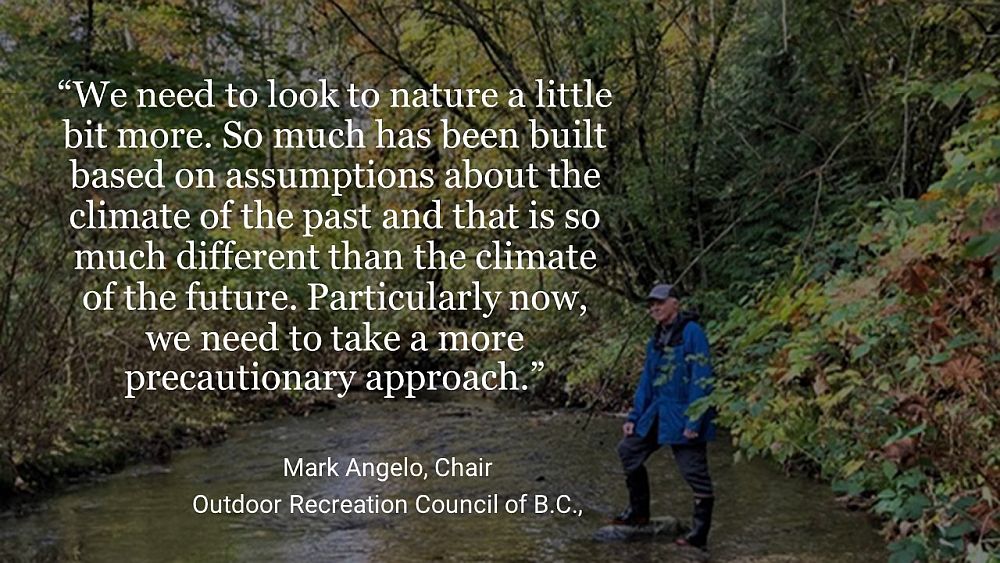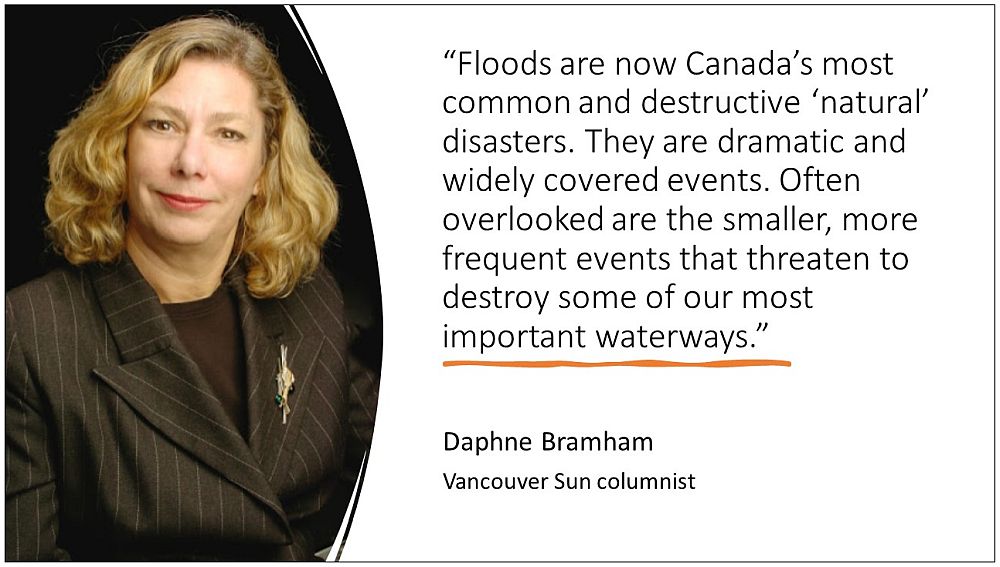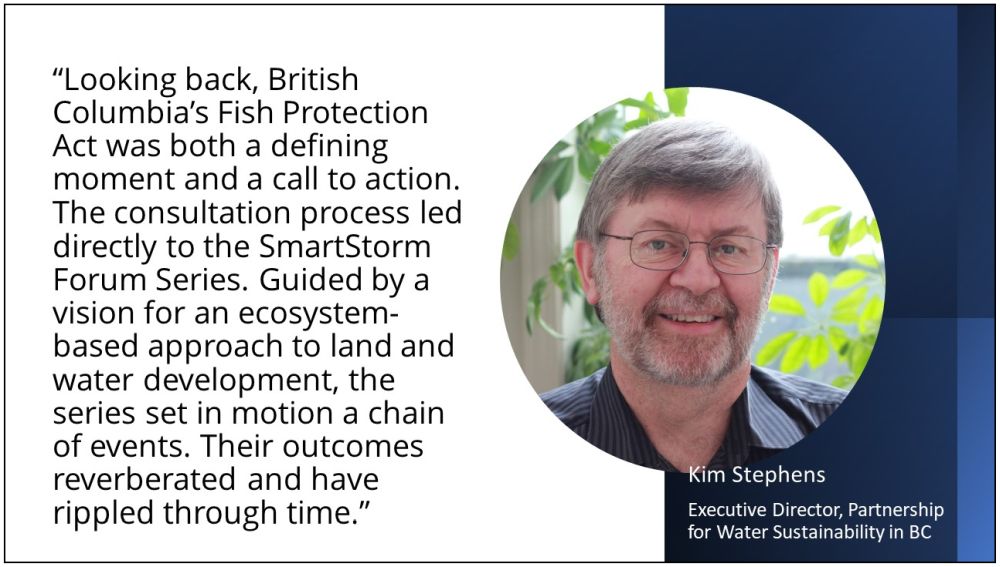METRO VANCOUVER’S ENDANGERED STREAMS: “Floods are now Canada’s most common and destructive ‘natural’ disasters. They are dramatic and widely covered events. Often overlooked are the smaller, more frequent events that threaten to destroy some of our most important waterways,” wrote Daphne Bramham, Vancouver Sun columnist (December 2021)
Note to Reader:
According to a report issued by the Outdoor Recreation Council of British Columbia in December 2021, two of British Columbia’s most endangered rivers are urban streams in the Metro Vancouver region, namely: Stoney Creek in the cities of Burnaby and Coquitlam: and the City of Surrey’s Tatalu (Little Campbell) River.

Protecting metro’s endangered rivers requires ‘more precautionary approach’
“Even before climate change, rivers were threatened by sewage runoff, toxic spills and being hemmed in by pavement. Now big, more preventive changes are needed,” wrote Daphne Braham, Vancouver Sun columnist, in an opinion piece published on December 6, 2021.
BC Outdoor Recreation Council highlights major deficiencies in the protection of urban streams
“The atmospheric river that hit BC in November, and the surging rivers and major flooding that followed, dealt a massive blow to many communities, rivers systems and salmon stocks. However, many smaller streams in and around many urban areas fared a little bit better and these waterways continue to play a vital role in sustaining salmon such as chum and coho, as well as many other species,” stated the report by the Outdoor Recreation Council of BC.
“Yet, while climate change is the most dominant pressure confronting most river systems, smaller urban streams also face an array of other threats. This year’s endangered urban streams statement highlights some of these issues, with a particular focus on Burnaby’s Stoney Creek and Surrey’s Tatalu (Little Campbell) River, normally viewed as two of greater Vancouver’s most productive urban waterways. Yet, the events that transpired along both streams this past year highlight some major shortcomings in how we protect urban waterways. “
To Learn More:
Download and read the complete column by Daphne Bramham titled Protecting metro’s endangered rivers requires ‘more precautionary approach’.
Download and read BC’S MOST ENDANGERED RIVERS: 2021/22 URBAN STREAMS EDITION.

RECONNECTING HYDROLOGY & STREAM ECOLOGY IN BRITISH COLUMBIA: Historical context for an ecosystem-based approach to managing land and water in the urban environment – the coming together of a group of change agents in 1997 set in motion a chain of outcomes
Some two decades ago, the SmartStorm Forum Series comprised events on Vancouver Island (Nanaimo in January 1999) and the Sunshine Coast (Sechelt in September 1999), and in the Fraser Valley (Abbotsford and Pitt Meadows in March 2001).
The genesis for the series was a focus group workshop held in October 1997. Convened by the Union of British Columbia Municipalities (UBCM), the workshop was part of the rollout process for the Fish Protection Act, enacted only a few months before.
The coming together of a group of change agents in October 1997 set in motion a chain of events that has reverberated through time. The SmartStorm Forum Series followed just over a year later; and generated the momentum that ultimately led to incorporation of the Partnership for Water Sustainability as a non-profit society on November 19, 2010.
In parallel with the SmartStorm Forum track, the provincial government also initiated the Water Conservation Strategy for British Columbia in 1997. Both were ‘top-down & bottom-up’ initiatives and were early examples of on-the-ground groundswells informing and influencing provincial policy through shared responsibility.
The two tracks merged with release of the Water Sustainability Action Plan for British Columbia in February 2004. In turn, this laid the groundwork for Living Water Smart, British Columbia’s Water Plan which was released in June 2008.

The SmartStorm Series set in motion a chain of events
The first SmartStorm Forum was held in 1999; the last two in March 2001. The kick-off consultation workshop for the Guidebook took place in Nanaimo on February 20, 2001. The SmartStorm Forum Series set in motion the following:
- The SmartStorm Forum Series generated the momentum to develop Stormwater Planning: A Guidebook for British Columbia, released in mid-2002;
- which begat the Water Balance Model for British Columbia, completed in 2003;
- which led to a knowledge-sharing session with elected representatives at the 2003 UBCM Annual Convention;
- which provided early credibility for the Water Sustainability Action Plan for BC, launched in early 2004;
- which led to the formation of the BC Green Infrastructure Partnership, launched in early 2004;
- which then laid the groundwork for the success of Convening for Action on Vancouver Island, launched in late-2006; and
- culminated with incorporation of the Partnership for Water Sustainability in British Columbia as a non-profit society on November 19, 2010.
When the SmartStorm Forum Series introduced the term ‘smart development’ in 1999 the goal was to advance implementation of an integrated and balanced approach to land use. It was Town of Gibsons Mayor Barry Janyk who coined the term ‘Smart Development’ to clearly differentiate the BC approach from the Low Impact Development terminology used in the United States.
“To change the way people think and do, we defined smart development as protecting property and sustaining natural systems in a cost-effective manner,” stated Mayor Janyk. “We made it clear that RAINwater management is at the heart of smart development. Whereas traditional STORMwater management is based on end-of-pipe solutions, a smart approach starts at the source – where rain falls.”

To Learn More:
The article provides historical context for developments in British Columbia that have influenced an ecosystem-based approach to managing land and water in the urban environment. It describes a transformative workshop hosted by the Union of BC Municipalities in 1997, and introduces what this game-changing event set in motion.


